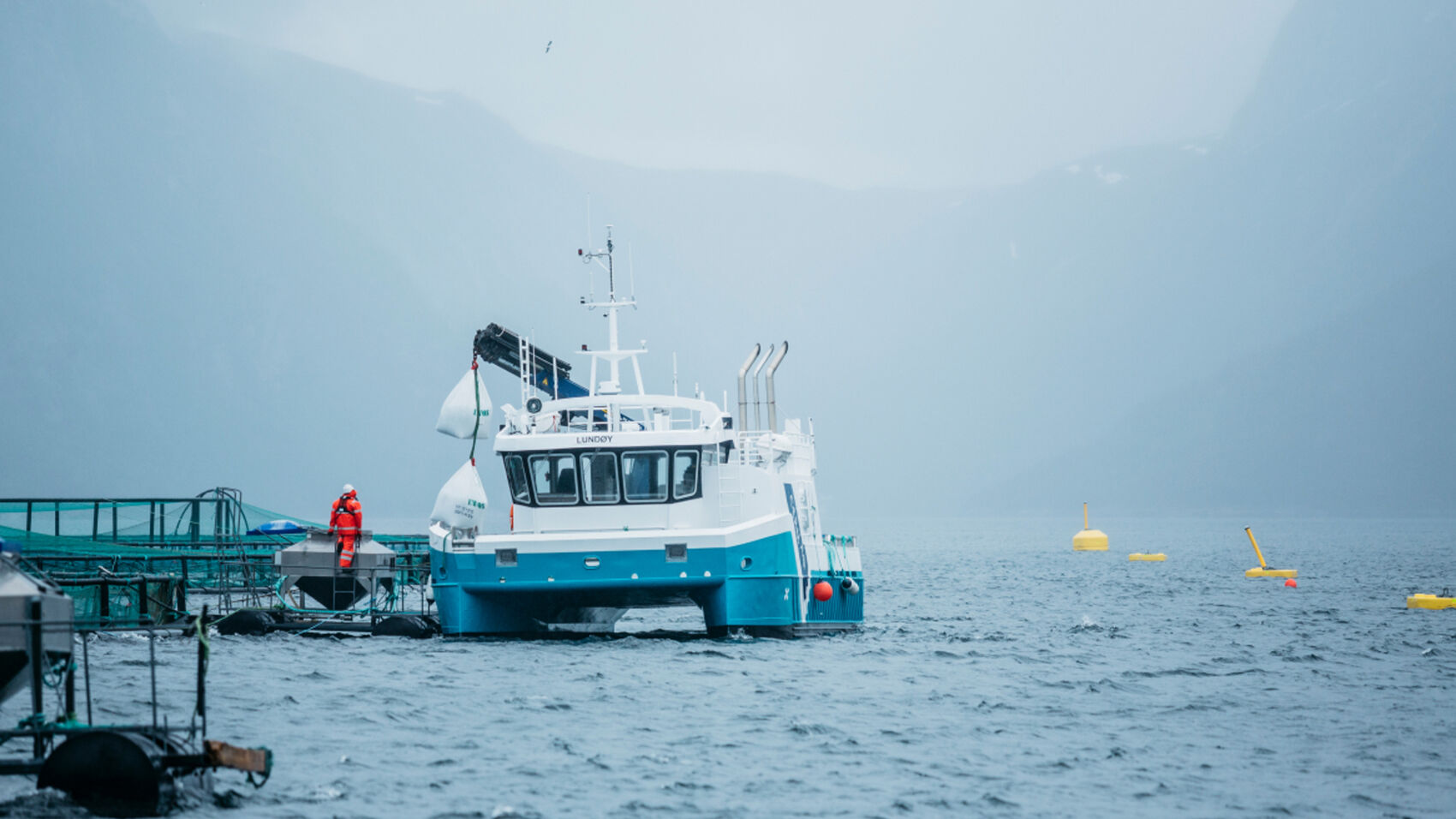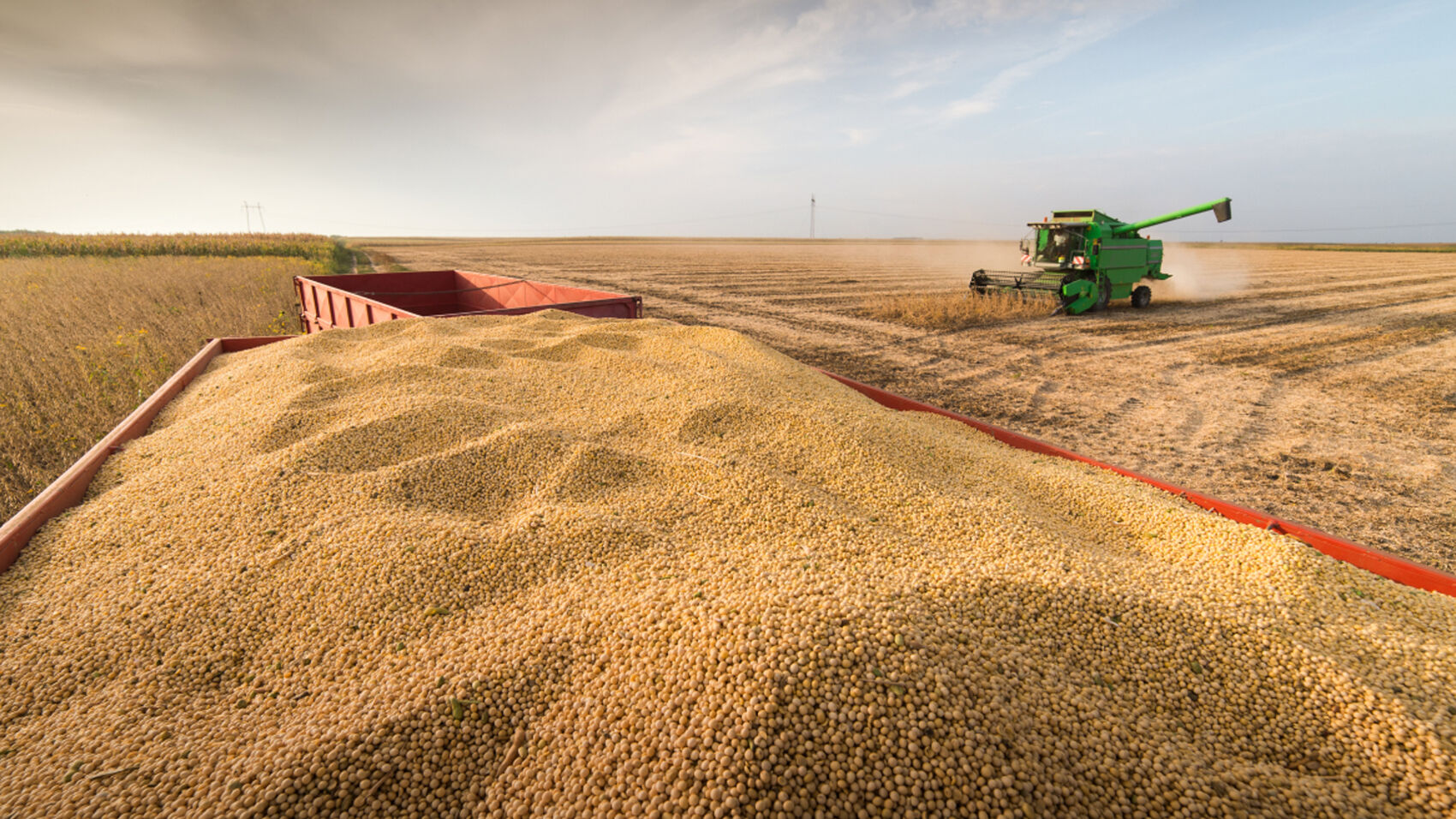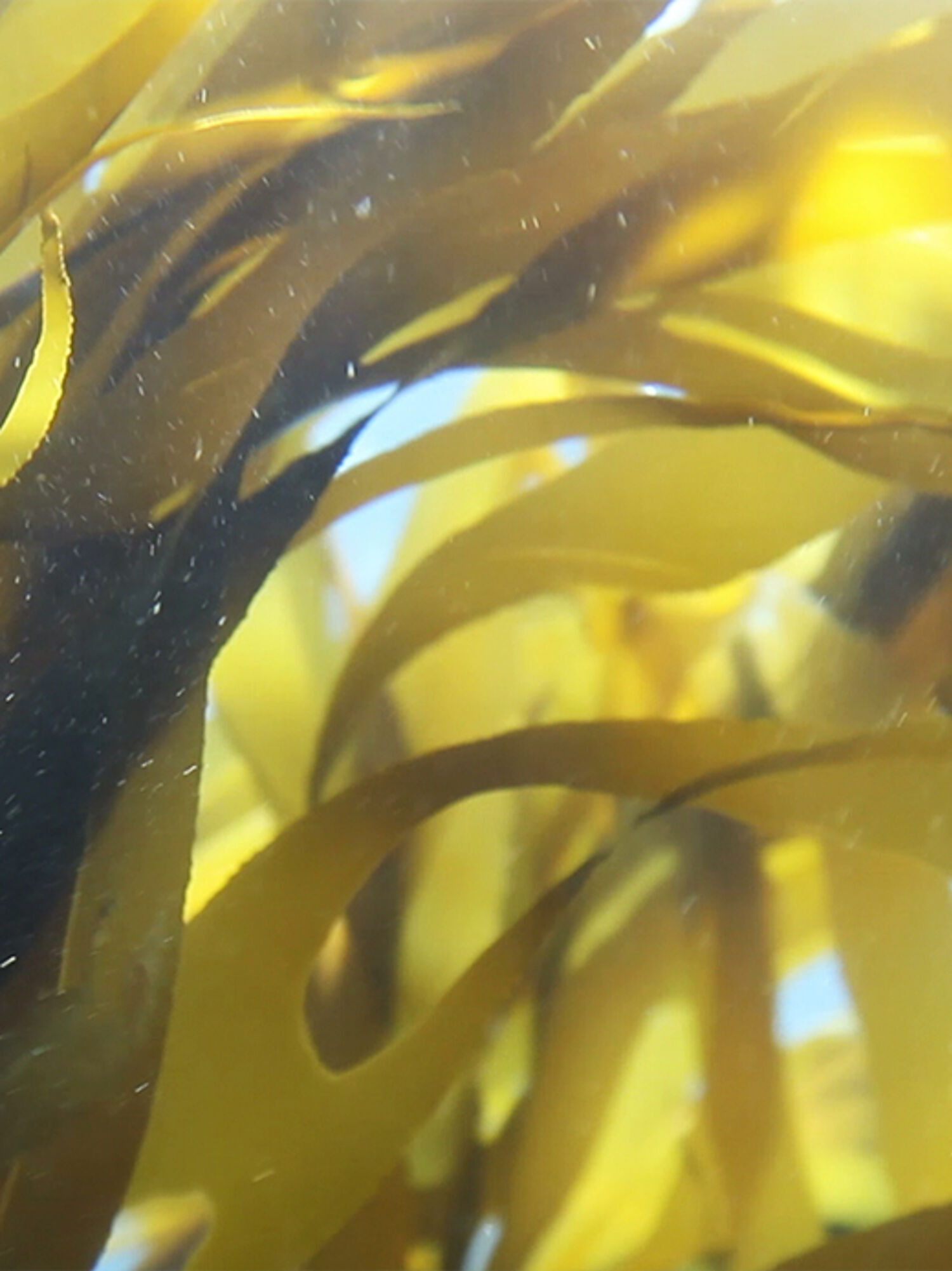Sea the solution / The Climate Challenge
With the goal of cutting 35% of greenhouse gas emissions (GHGs) by 2030, Cermaq is concentrating on reducing use of fossil fuels. “Cermaq Norway is leading in innovative electrified technology for saltwater fish production,” says Kristin Hurum, Director of Quality, Sustainability and Human Resources at Cermaq Norway.
Cermaq has been tracking its climate-change impact for over 10 years. The reduction of GHGs is a key part of Cermaq´s strategy to secure the extension of licences to operate in all regions in Canada, Chile, and Norway.
“We are dependent on the sea for our production. Climate change is raising the acidity of sea water and reducing CO2 emissions is important for keeping the ocean where we operate healthy for production of fish and securing existing biodiversity,” Hurum says.
More fish with less energy
In 2021, knowledge based on the data of Cermaq’s climate impact was used to calculate, submit, and confirm a climate target with the Science-Based Targets Initiative. This is a leading initiative dedicated to working with businesses to cut climate emissions and create a zero-carbon economy.
“Together with our goal to cut 35 % of absolute emissions globally by 2030, we also plan to increase our production of salmon to ensure a healthy supply of low-carbon protein to a world in need of more food,” Hurum says.
Main sources of emissions
To set emissions targets, Cermaq first created a full carbon-emissions assessment based on the calendar year of 2019. This contained both emissions from Cermaq’s own operations, and emissions produced upstream and downstream in Cermaq’s value chain.
“In this process we identified diesel fuel, used in our seawater operations, as the main source of emissions for our own operations. Emissions in connection with feed and transport of our fish to customers were the main sources both overall and in our value chain" Hurum explains.
“In this process we identified diesel fuel, used in our seawater operations, as the main source of emissions for our own operations.”
–Kristin Hurum, director of Quality, Sustainability and Human resources in cermaq Norway

Electrification measures
“Since 2015 in Norway, we have been converting power generation at our seawater sites from diesel generators to grid power. This cuts emissions and creates a better environment for our colleagues,” Hurum says.Cermaq has also started to use electric and hybrid diesel-electric motors and plans to retrofit boats in its fleet this year with hybrid engines. These investments will decrease fossil-fuel use by 40-80 percent, lower maintenance costs for engines, and provide a quieter working environment.
High ambitions
Cermaq's investments in this area will decrease fossil-fuel use by 40-80 percent, lower maintenance costs for engines, and provide a quieter working environment.
The leadership team at Cermaq in Chile and Canada are currently working to apply the knowledge gained in Norway to their local sites – and implement similar electrification measures. Cermaq has gained a deep understanding of where its main climate-emissions sources are located and how to shrink these hotspots.“Soy from Brazil currently makes up the largest proportion of the emissions profile from Cermaq’s fish feed. In addition to looking at feed formulation, Cermaq are working to optimise feeding techniques to minimise feed use in all phases of production and decrease the amount of feed needed to cut emissions from feed,” Hurum says.

Cermaq has also examined alternatives to Brazilian soy protein and will continue to seek opportunities to use ingredients that will both decrease emissions and provide fish with a healthy diet.
Transportation by train
As transportation of salmon is one of the main contributing factors to Cermaq’s GHG emissions, Cermaq is considering the option of transporting salmon by train both within Norway and from Norway to clients in Europe.
Cermaq also aims to change from carbon-intensive airfreight to sea freight for product being shipped from Chile.
“Increasing production of fillets is another method to decrease emissions. Transporting fillets instead of whole fish allows Cermaq to reduce the weight of product in each shipment and thereby save on emissions. In the future, Cermaq will continue to seek opportunities to use low-carbon flights to deliver to customers in key markets,” Hurum says.
What to read next

The future feed
Raw materials should have a low climate impact where they do not compete with human consumption and contain the right nutrients for the optimal health and growth of the salmon – resulting in high quality salmon products.